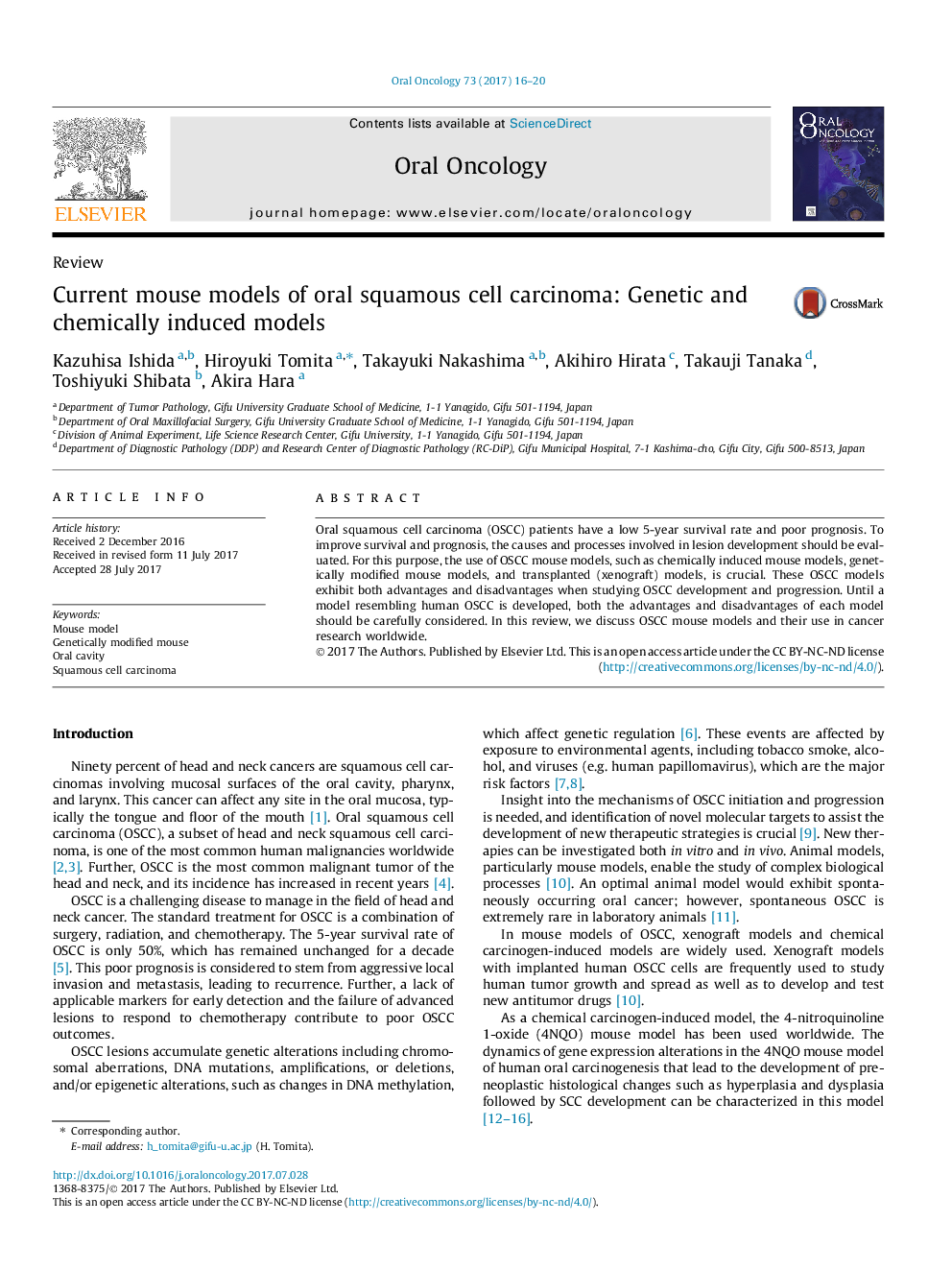| Article ID | Journal | Published Year | Pages | File Type |
|---|---|---|---|---|
| 5642519 | Oral Oncology | 2017 | 5 Pages |
Abstract
Oral squamous cell carcinoma (OSCC) patients have a low 5-year survival rate and poor prognosis. To improve survival and prognosis, the causes and processes involved in lesion development should be evaluated. For this purpose, the use of OSCC mouse models, such as chemically induced mouse models, genetically modified mouse models, and transplanted (xenograft) models, is crucial. These OSCC models exhibit both advantages and disadvantages when studying OSCC development and progression. Until a model resembling human OSCC is developed, both the advantages and disadvantages of each model should be carefully considered. In this review, we discuss OSCC mouse models and their use in cancer research worldwide.
Related Topics
Health Sciences
Medicine and Dentistry
Dentistry, Oral Surgery and Medicine
Authors
Kazuhisa Ishida, Hiroyuki Tomita, Takayuki Nakashima, Akihiro Hirata, Takauji Tanaka, Toshiyuki Shibata, Akira Hara,
